News
Self-driving Teslas and autonomous vehicles will end traffic as we know it
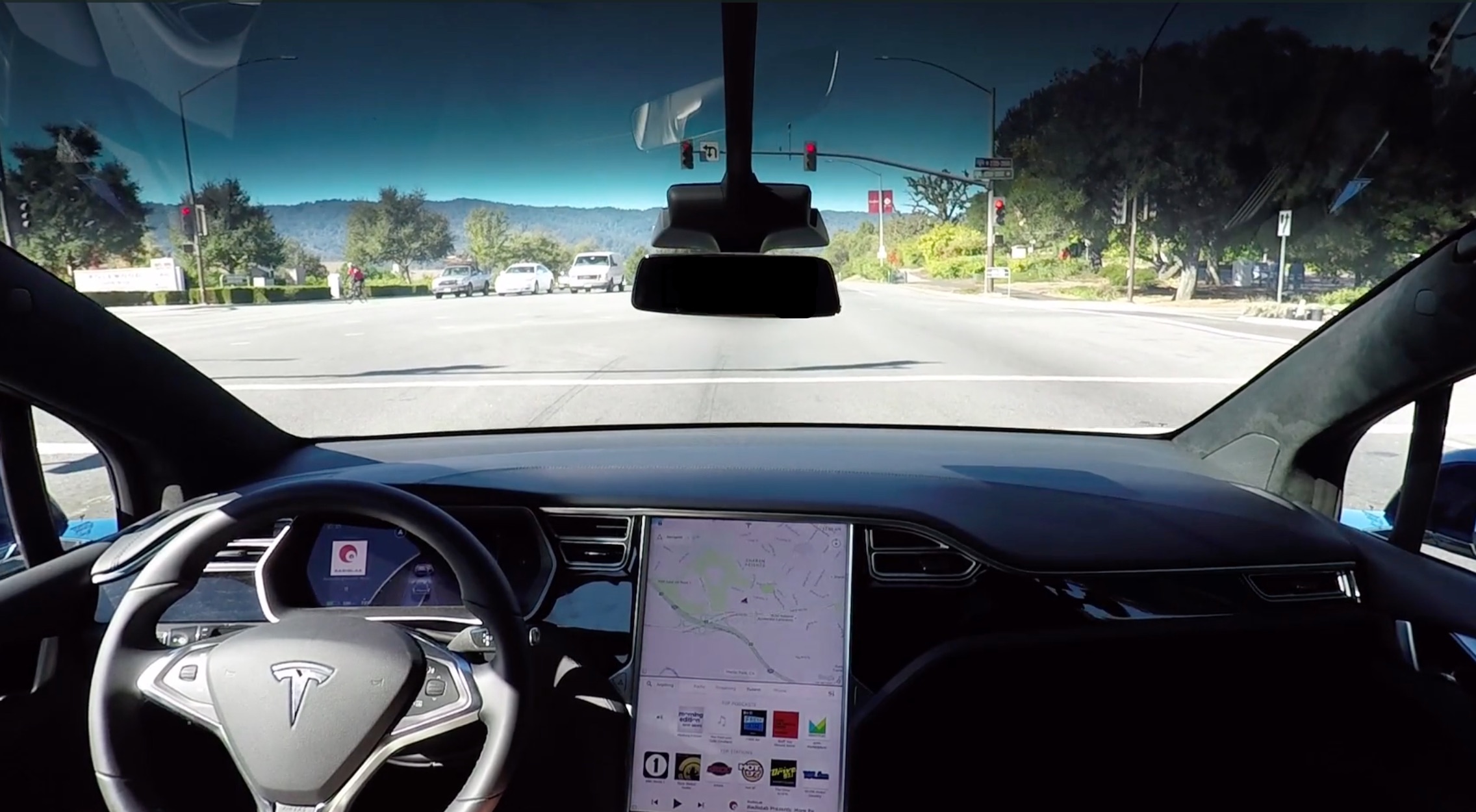
We are all fascinated with autonomous driving in terms of what it can do for us. Make the elderly mobile again without endangering the rest of us with their arguably reduced reaction times, less acute hearing and vision. We dream of the day when we can sleep through a long, boring trip. Doing valuable work in what would otherwise be dead time is a plus too. One thing we haven’t talked about too much is how autonomous cars can radically reduce the congestion of our roads.
Six Inches of Separation (With All Due Respect to Kevin Bacon)
One way we can reduce highway congestion is to reduce the following distances between cars. It takes a human about four seconds to react to a car stopping ahead of us. At 60 mph, that translates to 88 feet per second or a total traveled of 352 feet before you are really starting to stop the car. Using the 2 1/2 second rule would yield 220 feet. Now if you have a car which reacts in, oh say, 1,000 nanoseconds, or a millionth of a second, some have argued that a six inch separation would be more than enough time for the computer to stop the car in time to avoid a collision. So, a non-autonomous car would take up about 220 feet of roadway per car, autonomous cars would take up roughly 20 feet per car. 220 divided by 20 yields about 11 cars per 220 feet of roadway rather than one. You’ve magically increased the carrying capacity which decreases congestion.
Platooning
This increased use of autonomy will almost certainly create “platooning” on our roads where cars headed in the same direction are pulled up within inches of the car ahead creating a “car train” of 30, 50, or more cars all traveling at high speed to a destination ahead of them. With level 5 autonomy, some have suggested that 90 mph is reasonable while remaining very safe.
So let’s do a mind experiment here. You have a 220 foot stretch of roadway which can now safely carry 1 car traveling at 60 mph. Let’s put in a platoon of 11 cars traveling at 90 mph. That 220 foot stretch of roadway at 90 mph can carry 15 cars rather than 11 because 90 is 150% of 60. You have now increased the carrying capacity of the roadway by 1500%, or put another way, it would be like the New York State Thruway had 1/15 the cars on it that it does now. Rush hour would be like driving at three in the morning.
You may say that 220 feet is a preposterous amount of road and that people routinely travel only 10 to 20 feet behind the car in front of them. My response is look at the accident statistics. Yeah, you can travel that close. You just can’t travel that close safely.
Goose it Man!
One of the arguments against high speed travel in cars has been that as you increase speed, miles per kilowatt drop radically. Wind resistance is the big thief of range. When you read about people who manage to get ridiculous miles per charge out of their Teslas you can bet that last dollar that they are driving slowly!
Here’s where we can take a lesson from NASCAR and…wait for it, GEESE! Any fan of NASCAR knows that the drivers “draft” the car in front of them to save gas. The reason is very simple. The car in front is pushing the air out of the way, and the car behind benefits from traveling at the same speed in a partial vacuum, enabling the following driver to save fuel and possibly avoid a pit stop.
Why am I talking about geese? Ever wonder why geese travel in that cool V-formation? Similar reason. They avoid the turbulence from the goose ahead and conserve energy. Being cooperative sorts they trade places with the leader, who drops back and lets the next goose in line take over the toughest place, which is the lead. That way all the geese get to where they’re going quicker and with less fatigue. In our terms, with less battery energy expended.
I foresee platooning supplemented with leader “dropback” like the geese, let’s say, every five miles, to enable very fast driving times with lower fuel/kilowatt hour consumption. This will become part of the autonomous software suite.
So, all hail the goose, and I, for one, look forward to autonomous driving because of the effect platooning will have on our drives, and the automatic increase of the carrying capacity of our roads. Cool, very cool!
Allan Honeyman
(Submitted via email to the Teslarati Network. Do you a post you’d like to share? Email it to us at info@teslarati.com)

News
Tesla FSD (Supervised) is about to go on “widespread” release
In a comment last October, Elon Musk stated that FSD V14.2 is “for widespread use.”
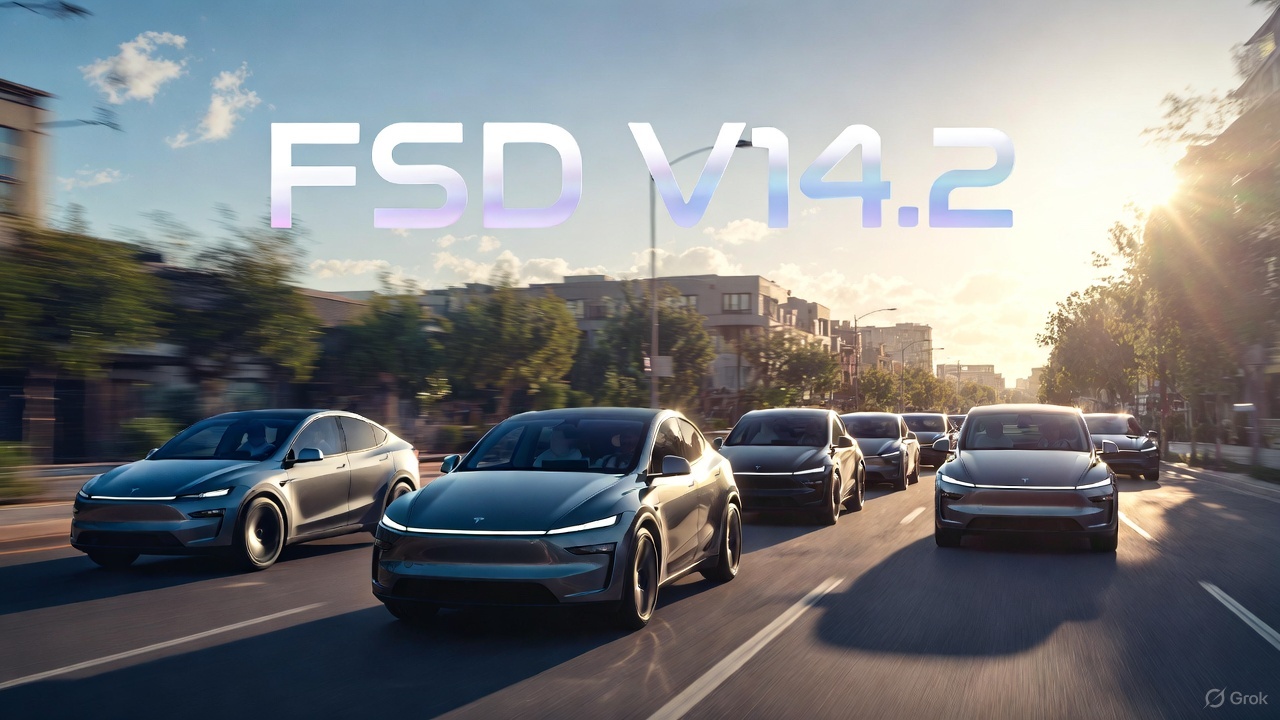
Tesla has begun rolling out Full Self-Driving (Supervised) V14.2, and with this, the wide release of the system could very well begin.
The update introduces a new high-resolution vision encoder, expanded emergency-vehicle handling, smarter routing, new parking options, and more refined driving behavior, among other improvements.
FSD V14.2 improvements
FSD (Supervised) V14.2’s release notes highlight a fully upgraded neural-network vision encoder capable of reading higher-resolution features, giving the system improved awareness of emergency vehicles, road obstacles, and even human gestures. Tesla also expanded its emergency-vehicle protocols, adding controlled pull-overs and yielding behavior for police cars, fire trucks, and ambulances, among others.
A deeper integration of navigation and routing into the vision network now allows the system to respond to blocked roads or detours in real time. The update also enhances decision-making in several complex scenarios, including unprotected turns, lane changes, vehicle cut-ins, and interactions with school buses. All in all, these improvements should help FSD (Supervised) V14.2 perform in a very smooth and comfortable manner.
Elon Musk’s predicted wide release
The significance of V14.2 grows when paired with Elon Musk’s comments from October. While responding to FSD tester AI DRIVR, who praised V14.1.2 for fixing “95% of indecisive lane changes and braking” and who noted that it was time for FSD to go on wide release, Musk stated that “14.2 for widespread use.”
FSD V14 has so far received a substantial amount of positive reviews from Tesla owners, many of whom have stated that the system now drives better than some human drivers as it is confident, cautious, and considerate at the same time. With V14.2 now rolling out, it remains to be seen if the update also makes it to the company’s wide FSD fleet, which is still populated by a large number of HW3 vehicles.
News
Tesla FSD V14.2 starts rolling out to initial batch of vehicles
It would likely only be a matter of time before FSD V14.2 videos are posted and shared on social media.
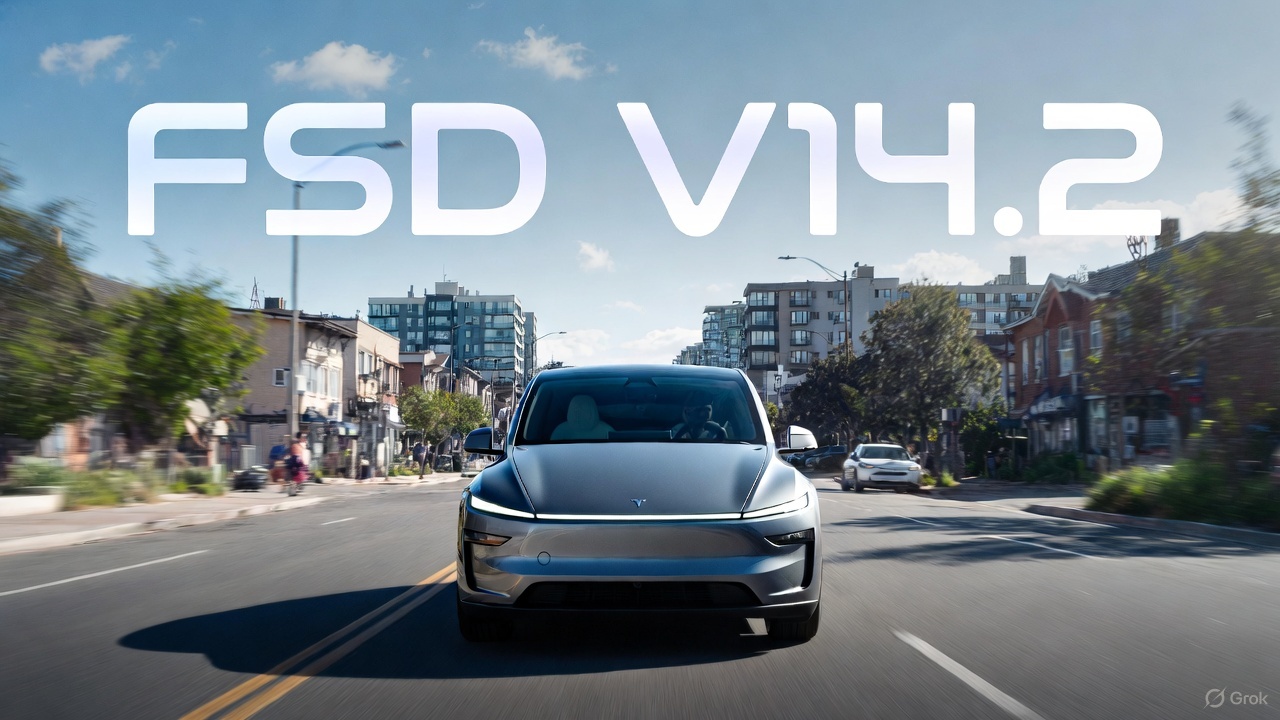
Tesla has begun pushing Full Self-Driving (Supervised) v14.2 to its initial batch of vehicles. The update was initially observed by Tesla owners and veteran FSD users on social media platform X on Friday.
So far, reports of the update have been shared by Model Y owners in California whose vehicles are equipped with the company’s AI4 hardware, though it would not be surprising if more Tesla owners across the country receive the update as well.
Based on the release notes of the update, key improvements in FSD V14.2 include a revamped neural network for better detection of emergency vehicles, obstacles, and human gestures, as well as options to select arrival spots.
It would likely only be a matter of time before FSD V14.2 videos are posted and shared on social media.
Following are the release notes of FSD (Supervised) V14.2, as shared on X by longtime FSD tester Whole Mars Catalog.
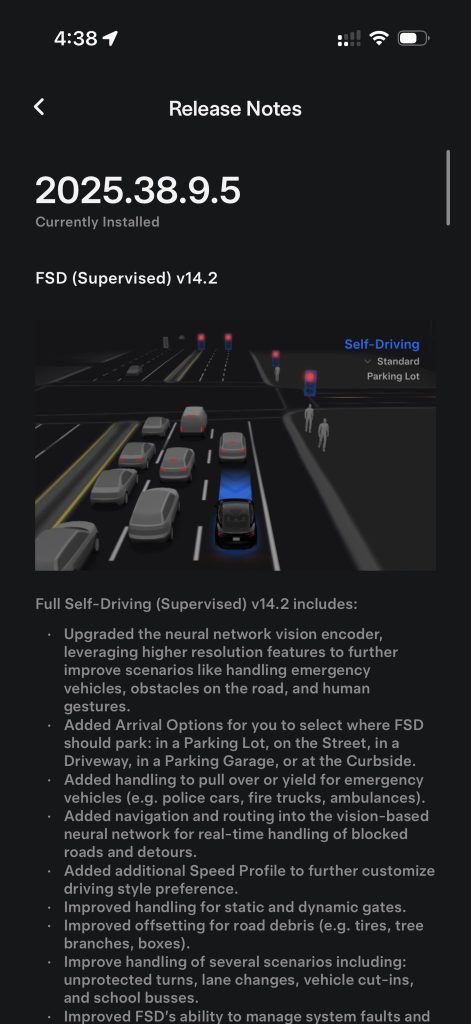
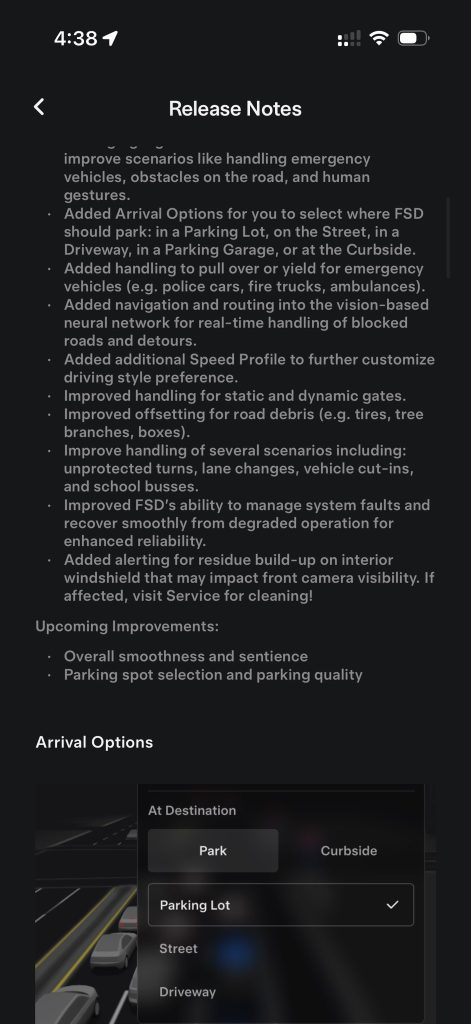
Release Notes
2025.38.9.5
Currently Installed
FSD (Supervised) v14.2
Full Self-Driving (Supervised) v14.2 includes:
- Upgraded the neural network vision encoder, leveraging higher resolution features to further improve scenarios like handling emergency vehicles, obstacles on the road, and human gestures.
- Added Arrival Options for you to select where FSD should park: in a Parking Lot, on the Street, in a Driveway, in a Parking Garage, or at the Curbside.
- Added handling to pull over or yield for emergency vehicles (e.g. police cars, fire trucks, ambulances.
- Added navigation and routing into the vision-based neural network for real-time handling of blocked roads and detours.
- Added additional Speed Profile to further customize driving style preference.
- Improved handling for static and dynamic gates.
- Improved offsetting for road debris (e.g. tires, tree branches, boxes).
- Improve handling of several scenarios including: unprotected turns, lane changes, vehicle cut-ins, and school busses.
- Improved FSD’s ability to manage system faults and improve scenarios like handling emergency vehicles, obstacles on the road, and human gestures.
- Added Arrival Options for you to select where FSD should park: in a Parking Lot, on the Street, in a Driveway, in a Parking Garage, or at the Curbside.
- Added handling to pull over or yield for emergency vehicles (e.g. police cars, fire trucks, ambulances).
- Added navigation and routing into the vision-based neural network for real-time handling of blocked roads and detours.
- Added additional Speed Profile to further customize driving style preference.
- Improved handling for static and dynamic gates.
- Improved offsetting for road debris (e.g. tires, tree branches, boxes).
- Improve handling of several scenarios, including unprotected turns, lane changes, vehicle cut-ins, and school buses.
- Improved FSD’s ability to manage system faults and recover smoothly from degraded operation for enhanced reliability.
- Added alerting for residue build-up on interior windshield that may impact front camera visibility. If affected, visit Service for cleaning!
Upcoming Improvements:
- Overall smoothness and sentience
- Parking spot selection and parking quality
News
Tesla Model X lost 400 pounds thanks to these changes
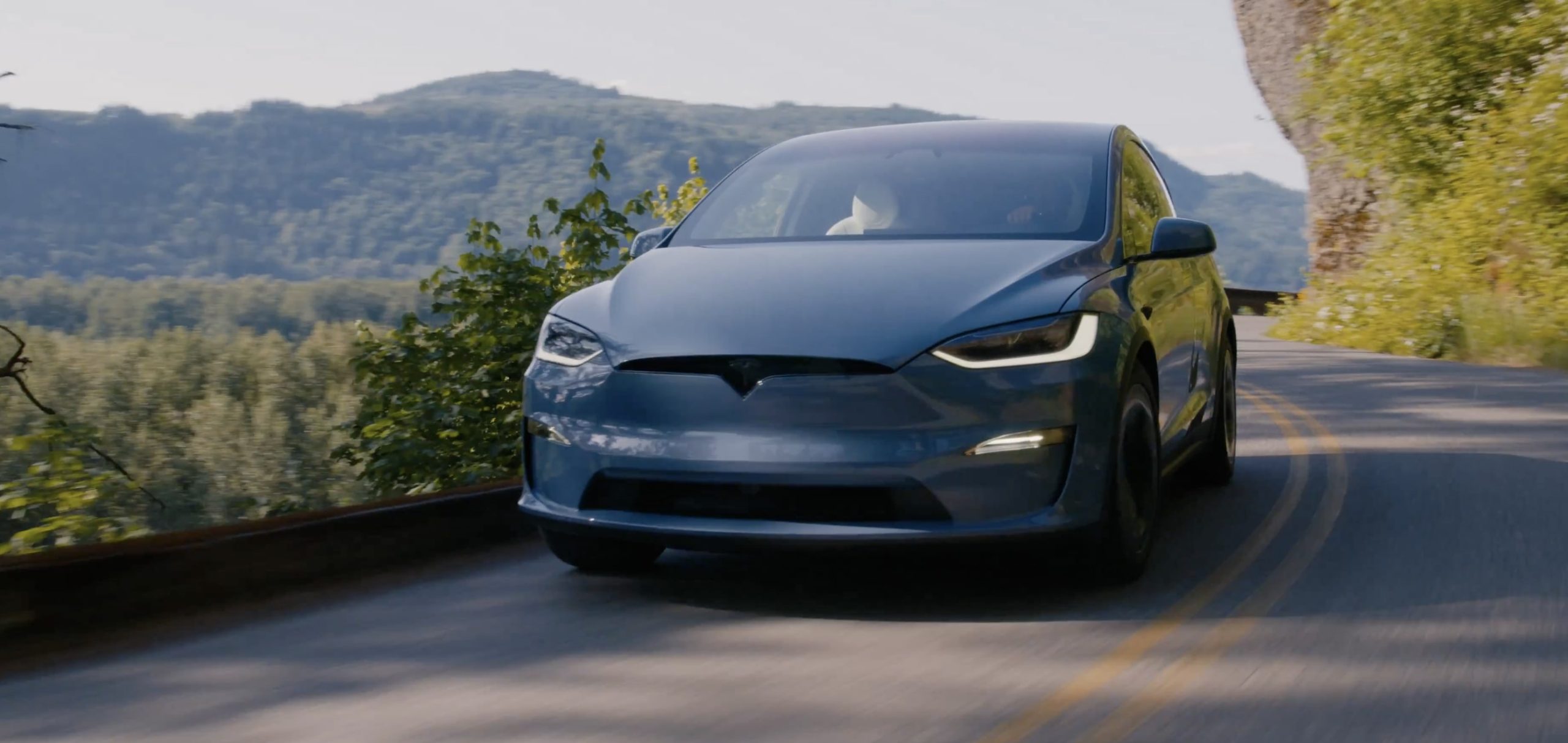
The Tesla Model X has always been one of the company’s most loved vehicles, despite its low sales figures, which can be attributed to its high price tag.
However, the Model X has been a signature item on Tesla’s menu of cars, most notably recognized by its Falcon Wing Doors, which are aware of its surroundings and open according to what’s around it.
But recent improvements to the Model X were looking slim to none, but it appears most of the fixes actually happened under the body, at least according to Tesla’s Vice President of Powertrain, Lars Moravy.
In a recent interview with Car and Driver, Moravy detailed all of the changes to the 2026 iteration of the vehicle, which was about 400 pounds lighter than it was originally. The biggest change is a modification with the rear motor, switching from an induction-type motor to a permanent-magnet design and optimizing the half-shafts, which shed about 100 pounds.
Tesla also got “almost 80 pounds out of the interior bits and pieces,” which “included making parts thinner, different manufacturing process choices, and incorporating airbag-deployment requirements into the headliner fabric,” the report said.
Additionally, the standard five-passenger, bench seat configuration saved 50 pounds by ditching pedestal mounting. This also helped with practicality, as it helped the seat fold flat. Engineers at Tesla also saved 44 pounds from the high-voltage wiring through optimizing the wiring from the charge-port DC/DC converter and switching from copper to aluminum wiring.
Tesla makes a decision on the future of its flagship Model S and Model X
Tesla also simplified the cooling system by reducing the number of radiators. It also incorporated Nürburgring cooling requirements for the Plaid variant, which saved nearly 30 pounds.
Many Tesla fans will be familiar with the megacastings, manufactured in-house by presses from IDRA, which also saves more than 20 pounds and boosts torsional stiffness by around 10 percent. Tweaks to the suspension also saved 10 pounds.
People were truly disappointed with what Tesla did with the Model S and Model X, arguing that the cars needed a more severe exterior overhaul, which might be true. However, Tesla really did a lot to reduce the weight of the vehicle, which helps increase range and efficiency. According to Grok, every 200 pounds removed adds between 7 and 15 percent to range estimations.
This makes sense considering the range estimations both increased by 7 percent from the Model X’s 2025 configuration to the 2026 builds. Range increased on the All-Wheel-Drive trim from 329 miles to 352 miles, while the Plaid went from 314 miles to 335 miles.








